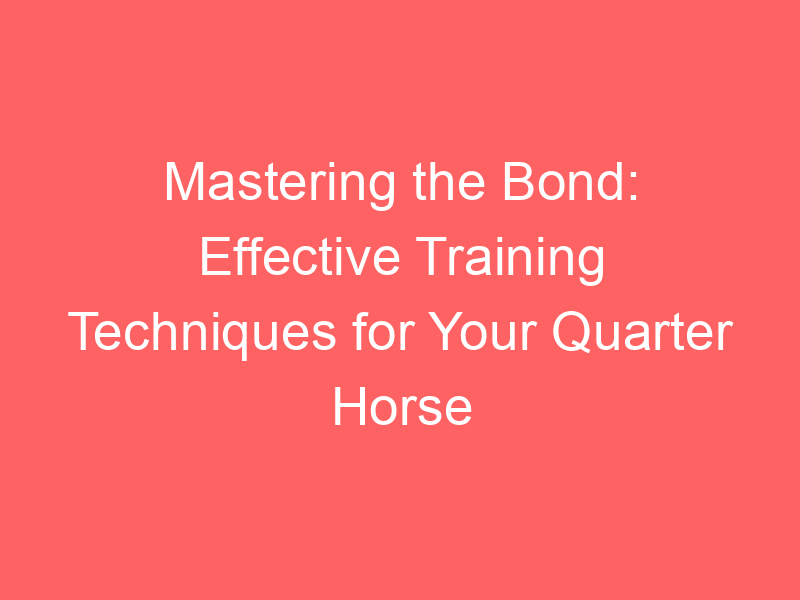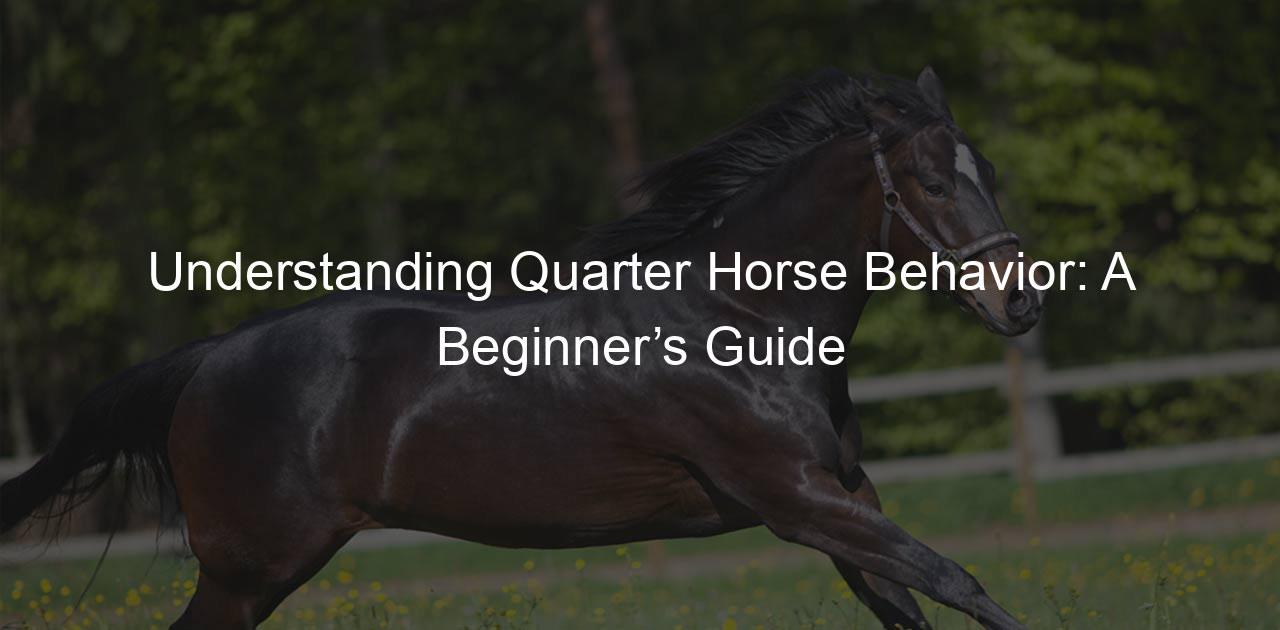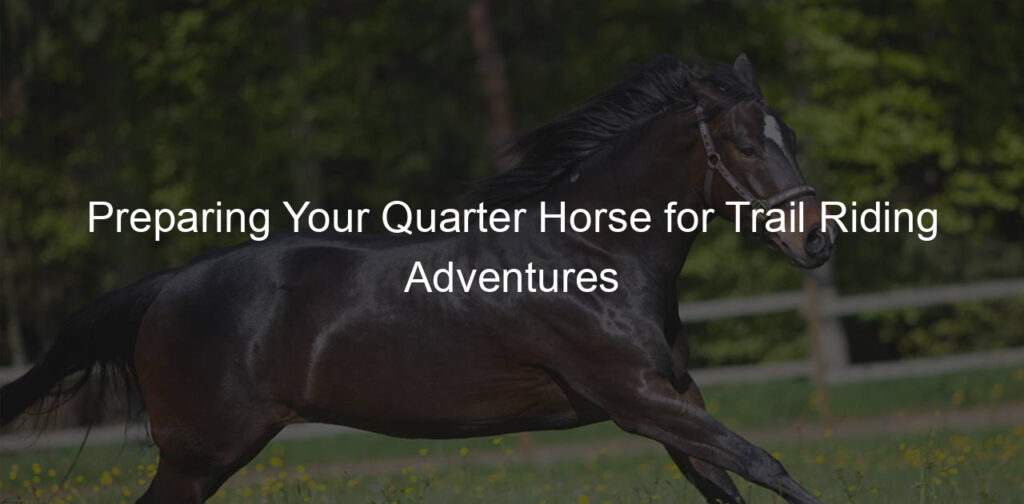
Introduction to Quarter Horse Training Techniques
Training a horse is a rewarding experience, but it requires a deep understanding of the horse’s unique characteristics and the importance of effective training techniques. This is especially true when it comes to Quarter Horses, a breed known for its speed, agility, and versatility. Let’s dive into these two crucial aspects of Quarter Horse training.
- Understanding the Unique Characteristics of Quarter Horses
- Importance of Effective Training Techniques
Quarter Horses are a unique breed with distinct traits that make them stand out. They are known for their muscular build, compact size, and exceptional speed, especially over short distances. This breed is also renowned for its calm and steady temperament, making them excellent companions and versatile performers in various equestrian disciplines.
One of the most notable characteristics of Quarter Horses is their ‘cow sense,’ an instinctive ability to anticipate and react to the movements of cattle. This trait makes them particularly suited for activities like herding and cutting, where they can showcase their agility and quick reflexes.
Understanding these unique characteristics is the first step towards effective Quarter Horse training. It allows you to tailor your training methods to their specific needs and abilities, ensuring a more successful and enjoyable training experience for both you and your horse.
Effective training techniques are crucial in shaping your Quarter Horse’s behavior, skills, and overall performance. The right training methods can enhance your horse’s natural abilities, strengthen your bond, and ensure their well-being and happiness.
Training should be a gradual process, starting with basic commands and gradually progressing to more complex tasks. Patience, consistency, and positive reinforcement are key elements of effective training. Remember, each horse is unique, and what works for one may not work for another. Therefore, it’s important to be flexible and willing to adapt your techniques as needed.
Effective training also involves understanding and respecting your horse’s limits. Pushing your horse too hard can lead to stress, injury, and a breakdown in trust. Instead, aim for steady, gradual progress, celebrating each small victory along the way.
In conclusion, understanding the unique characteristics of Quarter Horses and the importance of effective training techniques is crucial for a successful training experience. With patience, consistency, and a deep understanding of your horse, you can help your Quarter Horse reach its full potential.
Building a Bond with Your Quarter Horse
Building a bond with your quarter horse is a crucial part of horse training. This bond is not just about riding; it’s about understanding your horse’s behavior and recognizing their needs. Let’s delve deeper into this topic.
Understanding Your Horse’s Behavior
Understanding your horse’s behavior is the first step in building a strong bond. Horses communicate primarily through body language, and being able to interpret these signals can help you understand your horse’s needs and feelings.
- Interpreting horse body language: Horses use their ears, eyes, mouth, tail, and body posture to communicate. For instance, a relaxed horse will have its ears forward and its body relaxed. On the other hand, a horse with its ears pinned back and body tense may be feeling threatened or annoyed. Learning to interpret these signals can help you respond appropriately to your horse’s needs.
- Recognizing signs of stress or discomfort: It’s also important to recognize when your horse is feeling stressed or uncomfortable. Signs of stress in horses can include excessive sweating, restlessness, and refusal to eat. Discomfort can be indicated by limping, reluctance to move, or changes in behavior. If you notice any of these signs, it’s important to address the issue promptly to ensure your horse’s well-being.
Understanding your horse’s behavior is not just about interpreting their body language and recognizing signs of stress or discomfort. It’s about being attentive to their needs and responding with care and kindness. This is the foundation of a strong bond between you and your quarter horse.
Strengthening the Horse-Rider Relationship
Building a strong relationship with your horse is not just about spending time together. It’s about understanding each other, establishing trust, and being consistent. Let’s delve into these two crucial aspects of the horse-rider relationship.
- Importance of Trust in Horse-Rider Relationship
Trust is the cornerstone of any relationship, and it’s no different with horses. A horse that trusts its rider is more likely to be responsive, cooperative, and calm. This trust doesn’t come overnight; it’s built over time through positive interactions and experiences.
Imagine being in a situation where you’re unsure of what’s expected of you. You’d probably feel anxious, right? Horses feel the same way. When they trust their rider, they know they’re safe and understood. This trust can be built by spending quality time with your horse, understanding its needs, and treating it with kindness and respect.
- Role of Consistency in Building a Strong Bond
Consistency is another key factor in strengthening the horse-rider relationship. Horses are creatures of habit. They thrive on routine and predictability. When you’re consistent in your actions, your horse knows what to expect from you. This consistency can be in the form of regular feeding times, consistent training methods, or even the way you approach and handle your horse.
Imagine if someone kept changing the rules of a game you were playing. It would be confusing and frustrating, right? The same goes for horses. When you’re consistent, your horse feels secure because it knows what to expect. This consistency helps build a strong bond between you and your horse.
In conclusion, trust and consistency are two key factors in strengthening the horse-rider relationship. By understanding your horse, building trust, and being consistent, you can create a strong bond with your horse that will enhance your riding experience and make your horse happier and more cooperative.
Effective Horse Training Methods
Positive Reinforcement Training
One of the most effective methods of horse training is positive reinforcement. This method is based on the principle of rewarding good behavior, which encourages the horse to repeat it. It’s a gentle and respectful way of training that builds a strong bond between the horse and the trainer.
- Understanding the concept of positive reinforcement
Positive reinforcement is a concept derived from behavioral psychology. In the context of horse training, it involves rewarding the horse when it performs a desired behavior. This reward can be a treat, a pat, or verbal praise. The idea is to make the horse associate the behavior with something positive, thereby increasing the likelihood of the behavior being repeated.
- Examples of positive reinforcement in horse training
There are many ways to implement positive reinforcement in horse training. For instance, if you’re teaching your horse to stand still, you could reward it with a treat each time it successfully remains calm and stationary. Another example could be if you’re training your horse to respond to vocal commands. Each time the horse correctly responds to a command, you could give it a pat or a verbal praise. Remember, the key is consistency. The more consistent you are with your rewards, the quicker your horse will learn.
In conclusion, positive reinforcement is a powerful tool in horse training. It not only helps in teaching new behaviors but also strengthens the bond between you and your horse. It’s a method that respects the horse’s intelligence and emotional capacity, making it a preferred choice for many professional trainers and horse owners.
Pressure and Release Training
One of the most effective horse training methods is the pressure and release technique. This method is based on the natural instincts of horses and can help build a strong bond between you and your quarter horse. Let’s delve into the concept of pressure and release and explore some examples of how it’s used in horse training.
- Understanding the Concept of Pressure and Release
Pressure and release training is a technique where the trainer applies a certain amount of pressure to encourage a desired behavior. Once the horse responds correctly, the pressure is immediately released. This release of pressure rewards the horse for its correct response, reinforcing the desired behavior.
Imagine you’re trying to teach your horse to move to the side. You would apply pressure to the side you want them to move away from. As soon as they take a step in the right direction, you release the pressure. This teaches the horse that moving in the direction you want results in a comfortable release of pressure.
- Examples of Pressure and Release in Horse Training
Pressure and release can be used in various aspects of horse training. Here are a couple of examples:
| Training Aspect | How Pressure and Release is Used |
|---|---|
| Leading | When leading a horse, pressure can be applied to the lead rope. Once the horse moves forward, the pressure is released, reinforcing the forward movement. |
| Riding | While riding, pressure can be applied through the reins or rider’s legs to guide the horse. Once the horse moves in the desired direction, the pressure is released. |
Remember, the key to successful pressure and release training is timing. The release must occur immediately after the desired response to effectively reinforce the behavior. With practice and patience, this technique can greatly improve your horse training skills and strengthen your bond with your quarter horse.
Quarter Horse Bonding Tips
Building a strong bond with your Quarter Horse is essential for a successful and rewarding equestrian relationship. Here are some practical tips to help you establish this bond:
- Spend Quality Time with Your Horse
- Engage in Bonding Exercises for Horses
- Respect Your Horse’s Boundaries
Spending quality time with your horse is the first step towards building a strong bond. This doesn’t necessarily mean riding; it could be as simple as grooming, feeding, or just hanging out in the pasture. Horses are social animals and appreciate the company. Spending time with your horse allows you to understand their personality, likes, and dislikes, which is crucial for a strong bond.
Engaging in bonding exercises can significantly enhance your relationship with your horse. These exercises can range from simple ground work to more complex training techniques. For instance, you could try leading exercises, where you guide your horse around obstacles. This not only builds trust, but also improves your horse’s agility and responsiveness. Remember, consistency is key in these exercises.
Respecting your horse’s boundaries is crucial in building a bond. Horses, like humans, have personal space and comfort zones. It’s important to understand and respect these boundaries. If your horse seems uncomfortable or scared, take a step back and give them some space. Pushing too hard can lead to stress and fear, which can damage your relationship.
Building a bond with your horse takes time and patience. But with these tips, you can create a strong and lasting relationship with your Quarter Horse. Remember, every horse is unique, so what works for one might not work for another. Always be patient, understanding, and respectful, and you’ll see your bond with your horse grow stronger every day.
Equestrian Training Techniques
One of the most important aspects of equestrian training is groundwork. Groundwork training lays the foundation for a strong and trusting relationship between horse and rider. It helps to establish clear communication, mutual respect, and a solid understanding of each other’s expectations.
Groundwork Training
Groundwork training is the first step in the equestrian training process. It involves a variety of exercises that are performed on the ground, before the rider mounts the horse. These exercises help to build trust, improve communication, and establish a solid foundation for future training.
- Importance of Groundwork Training
- Examples of Groundwork Exercises
- Leading: This exercise involves the rider leading the horse from the ground. It helps to establish the rider as the leader and teaches the horse to follow commands.
- Longeing: In this exercise, the horse is led in a circle around the rider. This helps to improve the horse’s balance and coordination.
- Desensitization: This involves exposing the horse to different objects and situations to help them become more comfortable and confident.
Groundwork training is crucial for several reasons. Firstly, it helps to establish a strong bond between the horse and rider. This bond is essential for effective communication and mutual respect. Secondly, groundwork training helps to teach the horse basic commands and responses. This is important for the safety of both the horse and rider. Lastly, groundwork training provides a solid foundation for future training exercises. It prepares the horse for more advanced techniques and ensures that they are comfortable and confident with the rider.
There are many different groundwork exercises that can be used in equestrian training. Here are a few examples:
In conclusion, groundwork training is an essential part of equestrian training. It helps to build a strong bond between horse and rider, teaches the horse basic commands, and prepares them for more advanced training techniques. By incorporating a variety of groundwork exercises into your training routine, you can help to ensure that your horse is well-prepared for any challenges they may face.
Riding Training
Let’s dive into the world of riding training. This is an essential part of equestrian training techniques, and it’s crucial for both the horse and the rider. We’ll discuss the importance of proper riding techniques and provide examples of riding exercises.
- Importance of Proper Riding Techniques
Proper riding techniques are the backbone of successful equestrian training. They ensure the safety of both the horse and the rider. A well-trained rider can communicate effectively with their horse, leading to a stronger bond and better performance.
Good riding techniques also help in maintaining the horse’s health. Incorrect riding can lead to long-term health issues for the horse, such as back problems or joint stress. Therefore, learning and implementing proper riding techniques is not just about performance, but also about the well-being of your horse.
- Examples of Riding Exercises
Now that we understand the importance of proper riding techniques, let’s look at some examples of riding exercises that can help improve your skills.
| Exercise | Description |
|---|---|
| Posting Trot | This exercise helps improve balance and timing. The rider rises from the saddle in rhythm with the horse’s trot. |
| Serpentine | This exercise improves the horse’s flexibility and the rider’s control. The rider guides the horse in a series of S-shaped curves. |
| Two-Point Position | This exercise strengthens the rider’s leg muscles and improves balance. The rider stands slightly in the stirrups, leaning forward with their upper body. |
These exercises are just a starting point. As you progress in your riding training, you’ll learn more complex exercises tailored to your specific goals and your horse’s needs.
In conclusion, proper riding techniques are crucial for effective equestrian training. They ensure safety, enhance performance, and contribute to the horse’s health. Regular practice of riding exercises can help improve these techniques and strengthen the bond between you and your horse.
Conclusion: Horse Training for a Strong Bond
In this article, we’ve explored various aspects of horse training, with a special focus on Quarter Horses. Let’s take a moment to recap and understand the importance of a strong bond between a horse and its rider.
- Recap of effective training techniques
We’ve discussed several effective training techniques, such as positive reinforcement, clicker training, and lungeing. Remember, the key to successful training is consistency and patience. Each horse is unique and will respond differently to various methods. It’s important to find a technique that works best for both you and your horse.
For instance, positive reinforcement rewards the horse for good behavior, making it more likely to repeat that behavior in the future. Clicker training, on the other hand, uses a distinct sound to mark the exact moment the horse performs the desired behavior, followed by a reward. Lungeing is a technique where the horse is worked from the ground to improve its fitness and obedience.
- Importance of a strong horse-rider bond
A strong bond between a horse and its rider is not just beneficial, it’s essential. This bond is the foundation of a successful training process and a fulfilling equestrian experience. Building a strong bond with your horse requires time, trust, and mutual respect.
When a horse trusts its rider, it’s more likely to follow commands and less likely to react negatively to new or challenging situations. This trust is built through consistent, positive interactions and a deep understanding of the horse’s needs and behaviors. Remember, a horse is not just a pet or a tool for sport; it’s a partner in a journey of learning and growth.
In conclusion, effective horse training is a blend of well-chosen techniques and a strong horse-rider bond. It’s about understanding, respect, and a shared love for the journey. As the famous equestrian author, Lucy Rees, once said, “The horse, with beauty unsurpassed, strength immeasurable and grace unlike any other, still remains humble enough to carry a man upon his back.”









